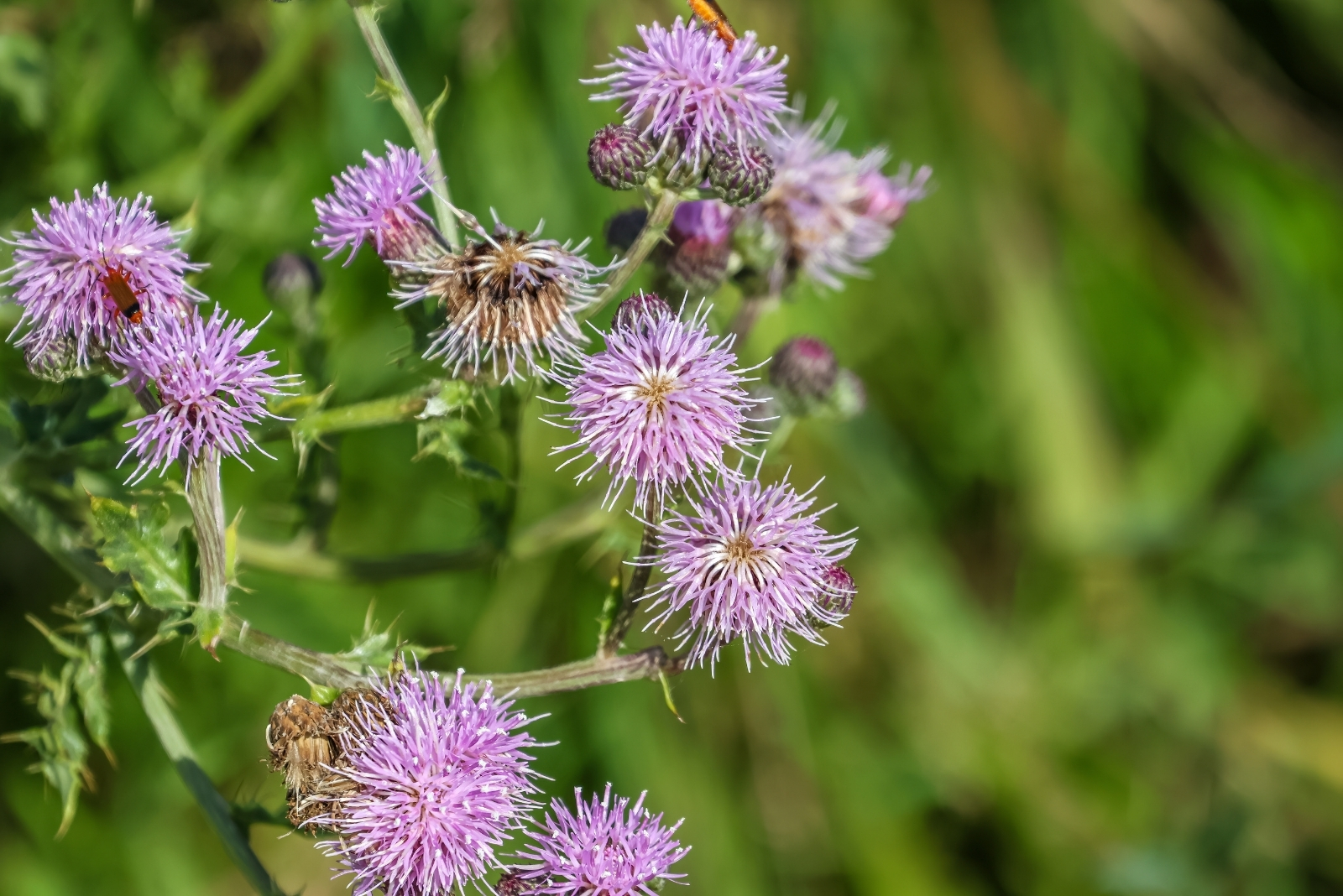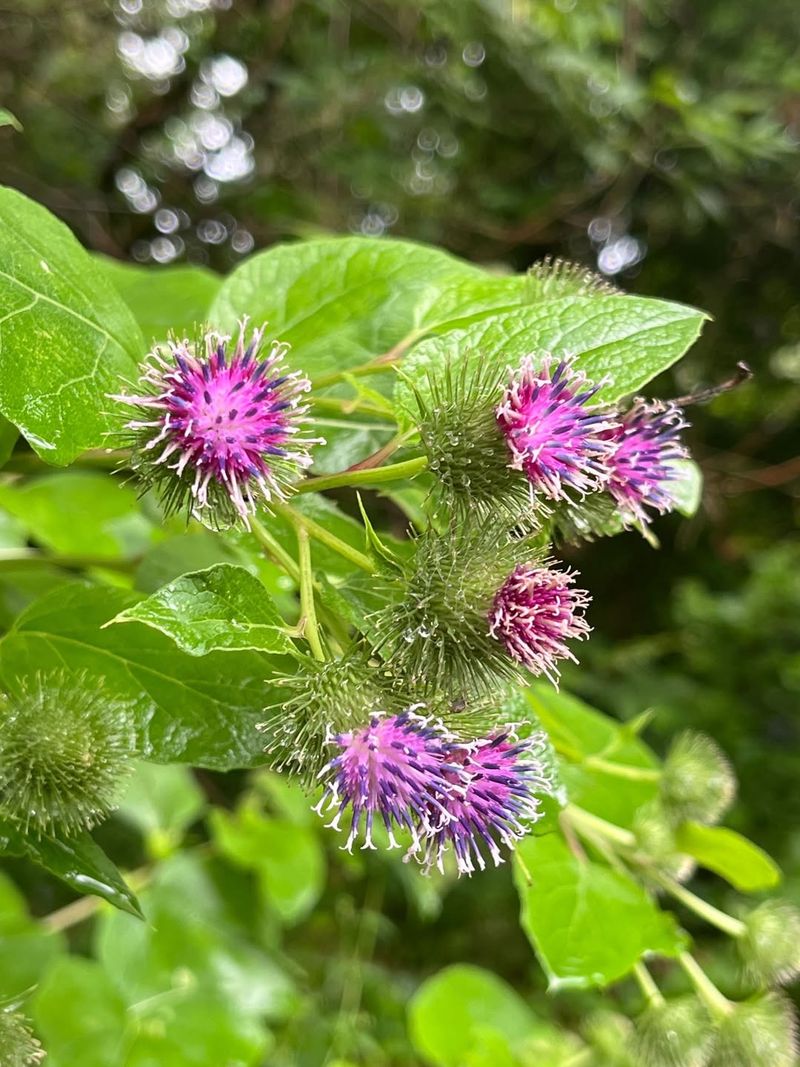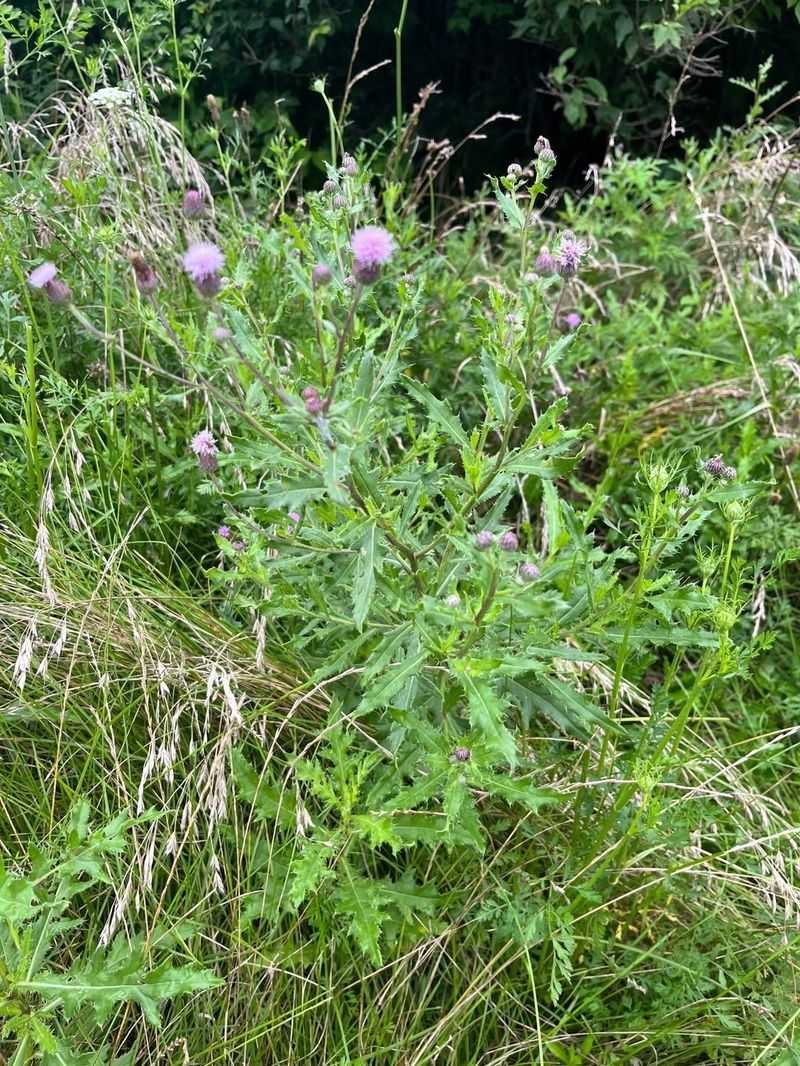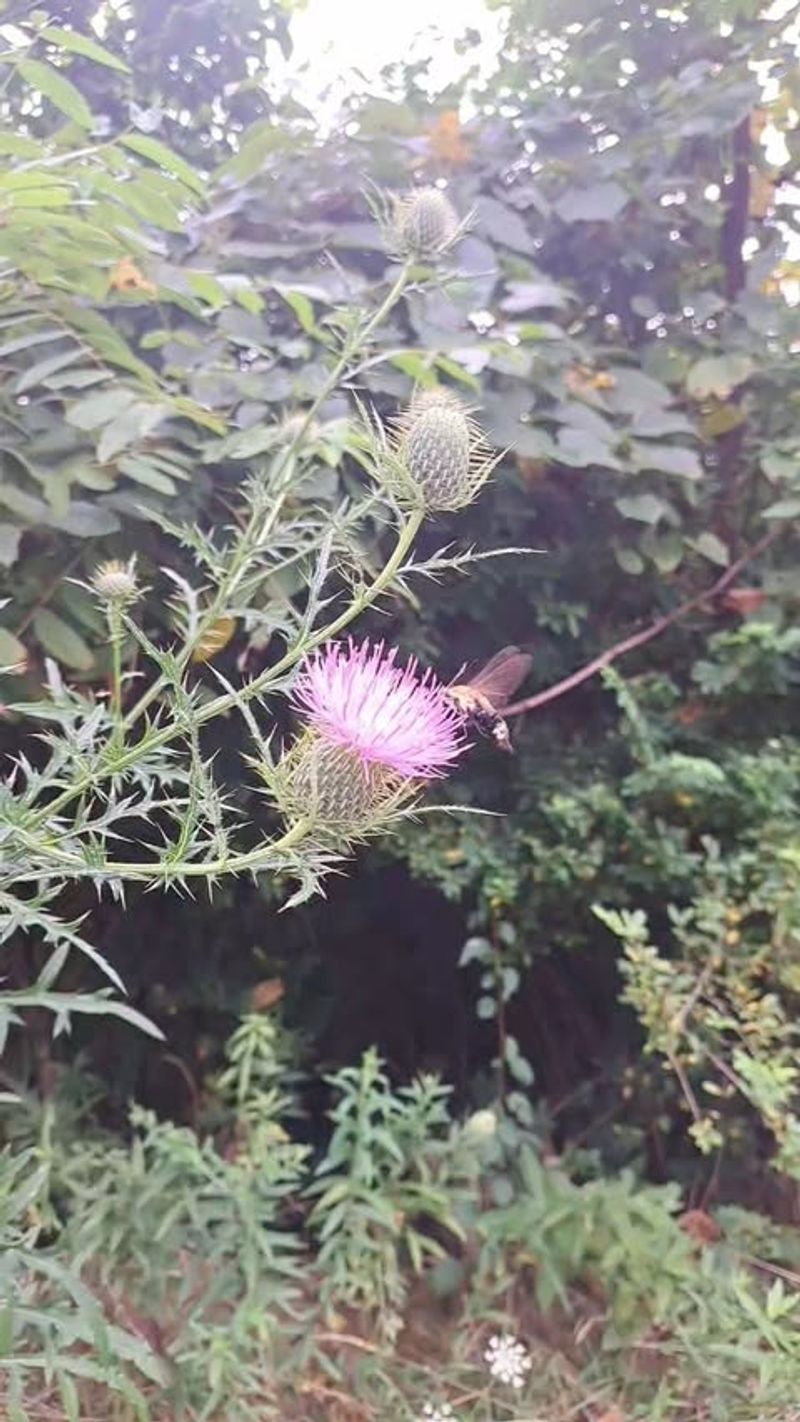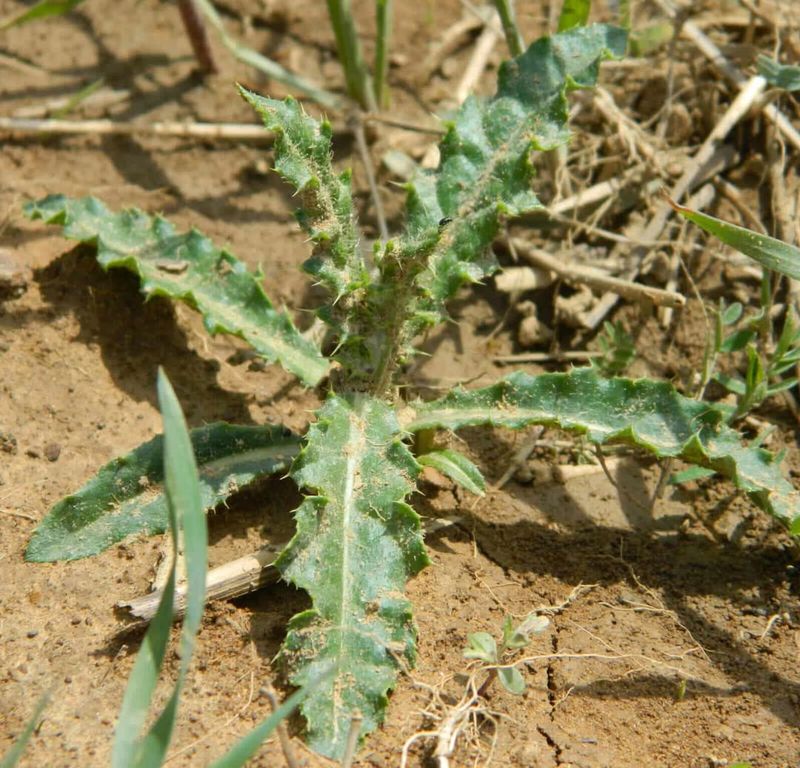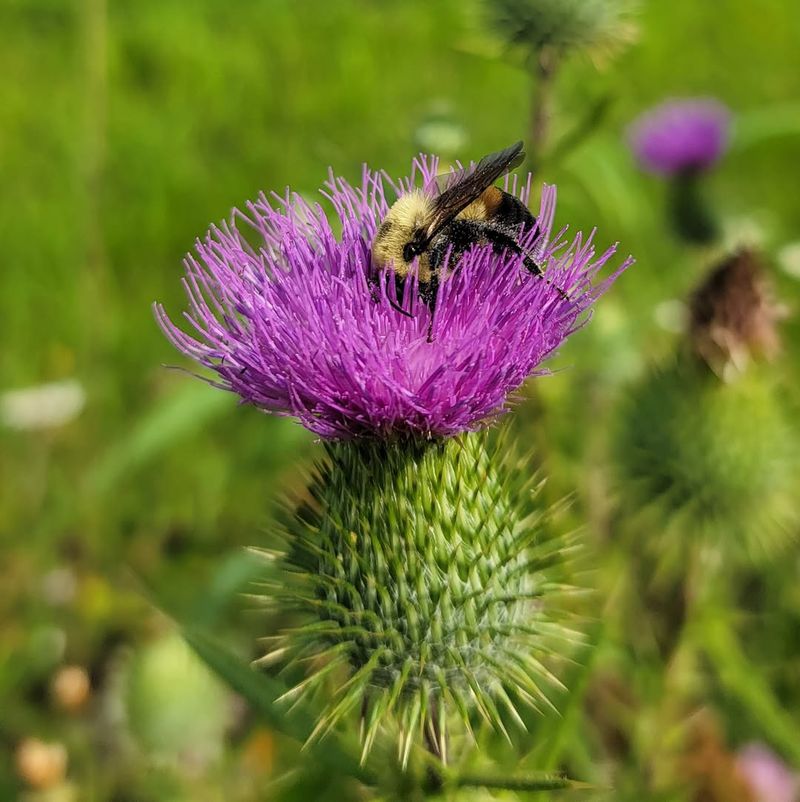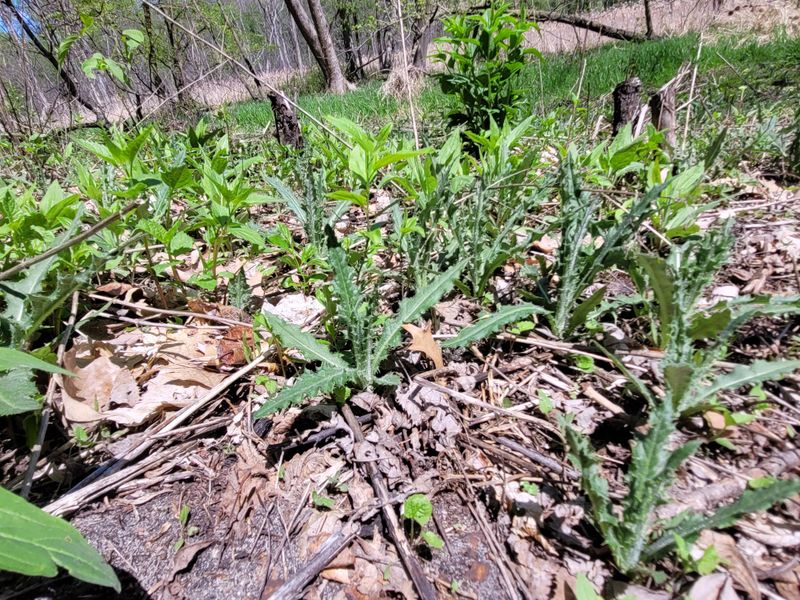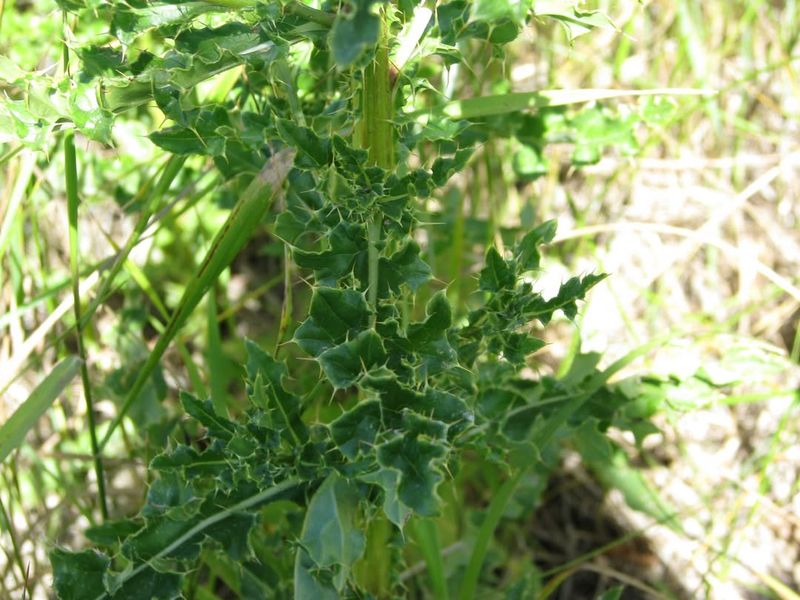Minnesota gardeners know the headache of dealing with invasive plants, but Canada thistle is in a league of its own. This prickly weed spreads fast and refuses to give up once it’s settled in.
It can rob your garden of nutrients and choke out the plants you actually want. Here are 8 ways it causes trouble you’ll want to watch out for.
1. Rapid Underground Spread
Just when you think you’ve pulled every thistle in your Minnesota garden, dozens more appear overnight. The culprit? An extensive root system that can stretch 15 feet horizontally and 20 feet deep!
These underground networks allow thistles to pop up far from the original plant, making them nearly impossible to fully remove without specialized techniques.
2. Nutrient Theft
Your precious Minnesota tomatoes looking pale and stunted? Canada thistle is likely siphoning away vital nutrients and water from the soil around them. Garden plants simply can’t compete with this greedy thief.
Many Minnesota gardeners don’t realize their vegetables are struggling until harvests dramatically decrease, as thistles quietly starve neighboring plants.
3. Painful Handling Hazards
Those innocent-looking purple flowers come with a nasty surprise! The sharp spines covering Canada thistle stems and leaves can easily penetrate gardening gloves, causing painful skin irritation for Minnesota gardeners.
Even brushing against these plants while tending your garden can result in uncomfortable pricks and potential skin reactions that last for days.
4. Seed Production Explosion
One female Canada thistle plant can produce over 1,500 seeds in a single season across Minnesota gardens! These lightweight seeds catch the breeze and travel for miles, creating new infestations far beyond your property line.
Worse yet, these seeds can remain viable in Minnesota soil for up to 20 years, creating a long-term battle for even the most dedicated gardeners.
5. Chemical Warfare Tactics
Minnesota gardeners are often surprised to learn that Canada thistle employs allelopathy—releasing chemicals into the soil that inhibit the growth of neighboring plants. Your flowers aren’t just being crowded out; they’re being poisoned!
This invisible chemical warfare gives thistles an unfair advantage in garden beds, allowing them to establish dominance even before they physically overtake an area.
6. Pollinator Distraction
Those showy purple flowers aren’t just an eyesore—they’re stealing valuable pollinators from your Minnesota vegetable garden! Bees and butterflies often prefer thistle blooms to vegetable flowers, reducing fruit and vegetable yields.
Many Minnesota gardeners notice fewer tomatoes, cucumbers, and squash forming when thistles bloom nearby, as the invasive plants redirect pollination services away from food crops.
7. Resistance to Removal
Tried pulling thistles from your Minnesota garden? Even a tiny root fragment left behind can regenerate into a new plant within days. This remarkable survival mechanism makes manual removal frustratingly ineffective.
Even chemical controls often fail against this persistent invader, as the extensive root system can simply go dormant and resurge when conditions improve later in the Minnesota growing season.
8. Property Value Reduction
A Minnesota yard overrun with Canada thistle doesn’t just look unsightly—it can actually lower your property value! Real estate experts note that invasive weed infestations are red flags for potential home buyers.
The association with neglect and the known difficulty of eradication make thistle-infested gardens a liability when selling your Minnesota home, potentially reducing offers by thousands of dollars.

